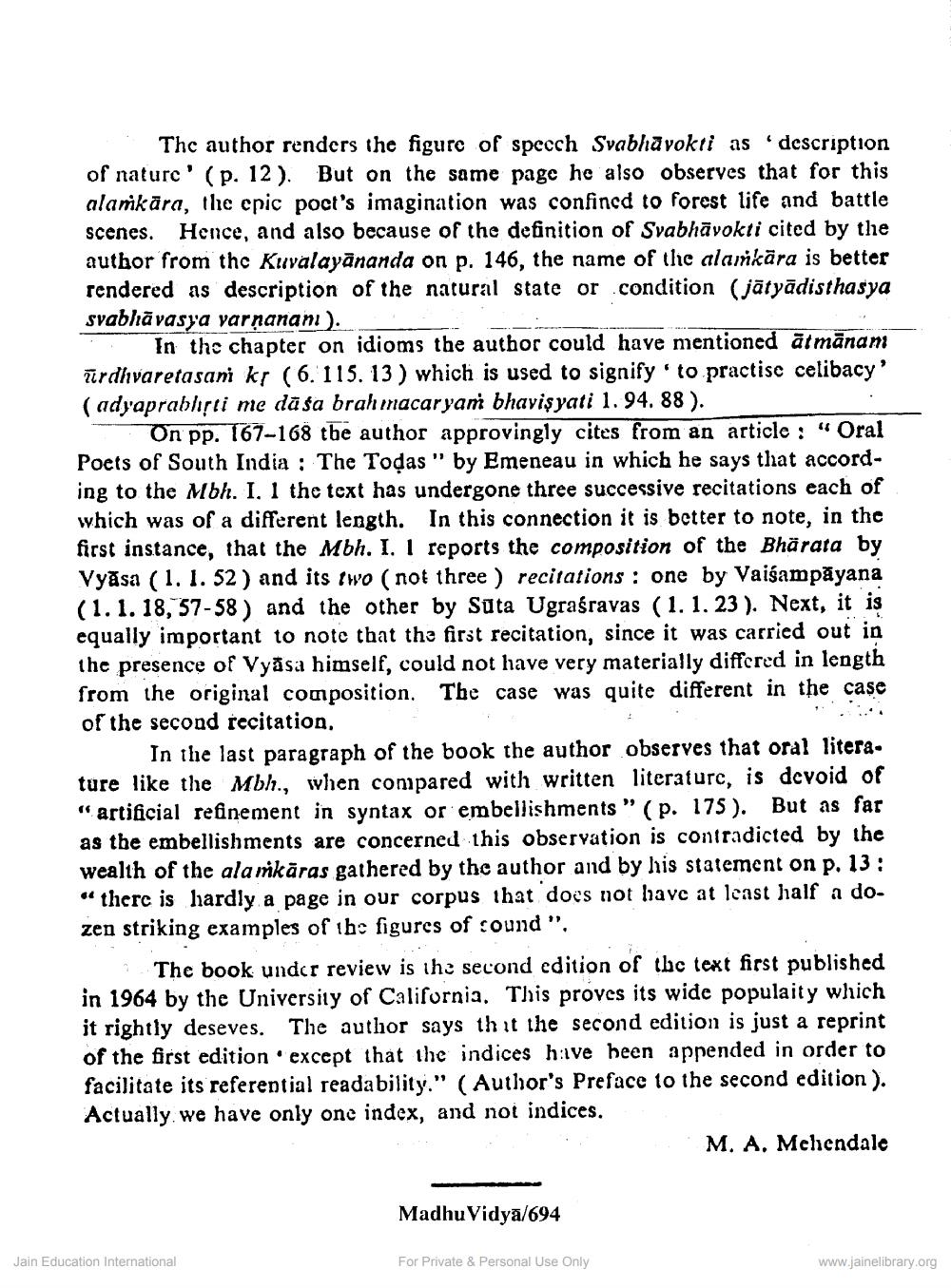________________
The author renders the figure of specch Svabhāvokti as description of nature' (p. 12). But on the same page he also observes that for this alamkāra, the cpic poct's imagination was confined to forest life and battle scenes. Hence, and also because of the definition of Svabhāvokti cited by the author from the Kuvalayānanda on p. 146, the name of the alamkāra is better rendered as description of the natural state or condition (jātyādisthasya svabhāvasya varnananı ).
In the chapter on idioms the author could have mentioned ātmānam urdhvaretasani kr (6. 115. 13 ) which is used to signify to practise celibacy ( adyaprabhisti me dā sa brahmacaryam bhaviş yati 1. 94. 88).
On pp. 167-168 the author approvingly cites from an article : "Oral Poets of South India : The Todas" by Emeneau in which he says that according to the Mbh. I, I the text has undergone three successive recitations each of which was of a different length. In this connection it is better to note, in the first instance, that the Mbh. I. 1 reports the composition of the Bhärata by Vyāsa (1. 1. 52 ) and its two (not three ) recitations : one by Vaiśampāyana (1.1.18, 57-58 ) and the other by Sūta Ugraśravas (1. 1. 23). Next, it is equally important to note that the first recitation, since it was carried out in the presence of Vyåsa himself, could not have very materially diffcred in length from the original composition. The case was quite different in the case of the second recitation,
In the last paragraph of the book the author observes that oral litera. ture like the Mbh., when compared with written literaturc, is devoid of "artificial refinement in syntax or embellishments” (p. 175). But as far as the embellishments are concerned this observation is contradicted by the wealth of the ala mkāras gathered by the author and by his statement on p. 13: “there is hardly a page in our corpus that does not have at least half a dozen striking examples of the figures of sound".
The book under review is the second edition of the text first published in 1964 by the University of California. This proves its wide populaity which it rightly deseves. The author says that the second edition is just a reprint of the first edition.except that the indices have been appended in order to facilitate its referential readability." (Author's Preface to the second edition). Actually, we have only one index, and not indices.
M. A. Mehendale
Madhu Vidya/694
Jain Education International
For Private & Personal Use Only
www.jainelibrary.org




